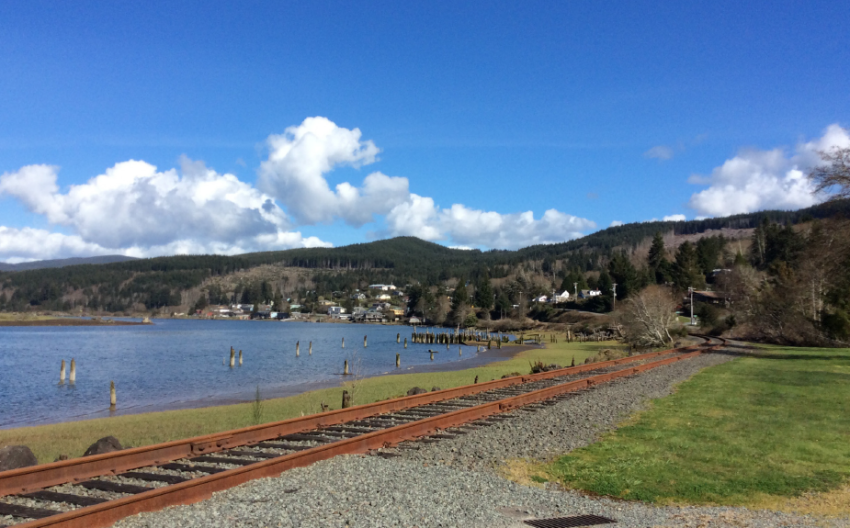By Bill Baertlein
My political journey started almost 15 years ago when I applied for a commissioner appointment to the Port of Tillamook Bay Board. My reason for applying was that I wanted the abandoned rail line to be made into a biking/hiking trail. My reasoning was that our residents needed a secure place for their children to walk and ride their bikes. I have advocated for the trail while on the Port Board, then as a Tillamook County Commissioner for 8 years and now for 4 years as an elected Port Board member. I have participated in five elections, during which my stance has been officially known.
Throughout my political career I have always been a strong advocate for community wellness. Exercise is important, and walking on a safe trail is an excellent way to stay active. I have spent 15 years attending meetings and serving at the Salmonberry Trail Intergovernmental Agency. We have
planned the trail carefully and cautiously. After 15 years we are now ready to build a trail.
The issue we have encountered is that rail with trail is not feasible on the coast. The Coastal Segment Study done by Parametric estimated the cost of a 10 ft wide rail with trail to be $120 million and rail to trail $46 million. Although these estimates pertain to a paved trail, they serve as an indication of the cost difference. This study is available on the Salmonberry Trail Web Site. Rockaway Beach found they can build a rail-to-trail twice as long as compared to a rail-with-trail for the same cost. They have requested that in the Port of Tillamook Bay lease negotiation with Oregon Coast Scenic Railroad (OCSR) terminate the lease in Rockaway Beach to accommodate the rail-to-trail option. This initiative would also create an opportunity to establish an unpaved rail-to-trail path extending from Rockaway Beach to Wheeler and potentially further.
The lease with OCSR ends on December 31, 2026. The Port Board is in negotiations with the Scenic Railroad over the terms of the new lease. The primary matter concerns how the right of way (ROW) is allocated between the tourist train and residents’ recreational activities.
Part of POTB’s consideration is that OCSR only uses from Garibaldi to Wheeler for the tourist rides, the rest is unused for train rides. Most of their income is from Garibaldi to Rockaway Beach.
While OCSR has dreams of trips up to the confluence they will never happen. The bridge over the Nehalem River just past Mohler has been deemed unusable for supporting the weight of a train. Further up another bridge is out and substantial in-water work will be required to make it passable. The potential total cost is $2,000,000. A review of OCSR tax returns on the IRS public nonprofit website indicates significant losses, and there are insufficient finances available to support the repair. It would be a waste of taxpayer money to get government money to restore the bridges for a couple of dozen trips a year to the confluence. From POTB to Garibaldi is also deteriorating. The Trask Bridge has been closed to passengers. To cross the bridge, the engineer exits the train and lets it idle across where another person boards to drive it to its destination. One of the bridges over the sloughs north of Tillamook collapsed under the weight of a passing engine.
It is painfully obvious that OCSR has more ROW than it can maintain. Let us be realistic, they cannot support more than Garibaldi to Rockaway Beach. We have plenty of activities for the herds of tourists. It is time we did something for ourselves. Let us build a trail!


